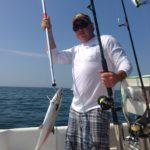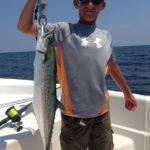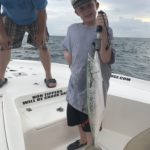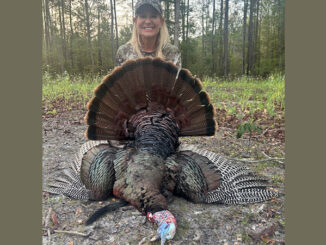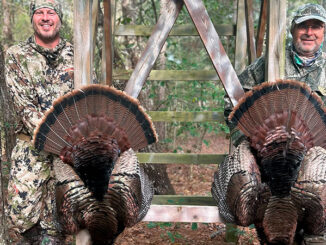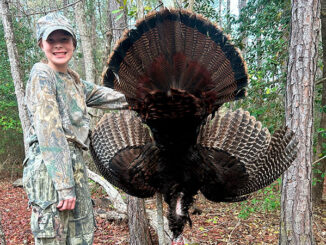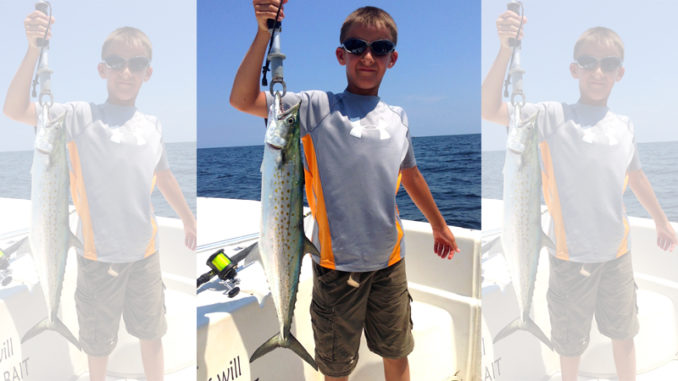
Fishermen along South Carolina’s beaches have plenty of opportunities to mop up on mackerel as the summer heat peaks.
As late summer rolls around, the fireball in the sky continues to bake South Carolina’s beaches, pushing nearshore water temperatures to their peaks. And the peak of the sizzlin’ summer is a great time for anglers with an affinity for Spanish mackerel to target these yellow-spotted firecrackers.
The ocean is one massive food pyramid, with lots of players on both ends of the ladder. The tides suck water out of the inshore nursery grounds twice a day, bringing a fresh buffet to lots of hungry predators. And Spanish mackerel are among those predators.
During the summer, beaches and inlets are chocked full of bait — mullet, menhaden, croaker and more. But while some top predators move out to deeper, cooler water when it gets hot inshore, Spanish mackerel are quite tolerant of the 88-degree water and make their summer homes along Carolina beaches.
“Spanish schools are abundant along the beach during the summer. They arrive in April and are a good species to target until the early fall cool down,” said Tom Cushman of Captain Cush Charters in Little River, S.C. “Spanish fuel up on bait all summer long. And it doesn’t take long to get your limit when you get into them.”
Spanish might be anywhere from the beachfront out to 40 feet of water, he said. Structure — or anything else that congregates baitfish — will attract schools of Spanish.
“We troll small spoons along the beaches for Spanish and around the nearshore reefs. Plenty of bait along the beach and at the reefs attracts them,” Cushman said.
Keep your distance when trolling
Clark spoons are the norm for fooling Spanish mackerel. These lightning-fast feeders slash through schools of bait and come back through to clean up the bloody morsels. Cushman prefers to troll Nos. 00 and 1 Clark spoons at speeds of up to five knots. He pulls some at the surface a considerable distance behind the boat. But a small planer or trolling weight usually brings more success.
“Fish are feeding near the surface. But the weighted lines can get hit more than the flat lines, especially the planers,” he said.
Cushman will change the sizes of spoons and the length of the leader depending on the water clarity. And at the peak of the summer heat, nearshore waters are usually relatively clear. Spanish feed purely based on sight and will quickly lose interest in a lure when leaders are too short, revealing their supportive hardware, including swivels. Cushman prefers to use a 30-foot section of 20-pound monofilament or fluorocarbon for leader.
“Spanish are shy of hardware. We may add more leader if they aren’t cooperating,” he said.
Adam Goodwin of Reel Fly Girlz Fishing Charters also tags Spanish as one of his top summertime species for his customers out of Murrells Inlet.
Fishing stationary is also a good tactic
“Spanish fishing can be epic in the mornings during the summer,” Goodwin said. “The bigger fish start moving in later in the summer, and we change up our tactics some.”
Goodwin trolls for Spanish with hardware. But he will also fish stationary with live bait in hopes of landing some of the bigger Spanish that show up later in the summer.
“I like to start a feeding frenzy first by throwing out handfuls of bait from the livewell,” he said.
Goodwin fills his livewell early in the morning with finger mullet and then heads out.
“I will scoop them out eight to 10 at a time and toss them out around a feeding school. They start crushing them quickly and get used to feeding close to the boat,” he said.
Then, it’s time for the bait-and-switch move. Goodwin nose-hooks a finger mullet on a No. 1 or 2 size treble hook with a 3-foot leader of 15-pound wire and pitches it into the crowd.
Hit ’em with the hook
“If you can get them into a feeding frenzy, they will not think twice about smashing the one with a hook in its mouth, as long as it is swimming freely,” he said. “That’s why I like to nose-hook them over hooking them in back. It needs to swim naturally. And when it does, they will hit it at 20 miles per hour and never look back.”
Goodwin will often vary his leader length depending on how good the bite is. But he typically uses a 3-foot section.
Trolling can be effective anywhere from the beachfront to the jetties and to the nearshore reefs. But the stationary method should be utilized in a place where the bait and Spanish are known to congregate.
“I like to free-line live bait at the nearshore reefs. And while we are there, we can also bottom-fish for other species,” he said.
Several reefs within sight of Grand Strand beaches offer opportunities to live-bait for Spanish. Out of Little River, the Jim Caudle Reef and the Ron McManus Memorial Reef are just a few miles from the sea buoy. And on the south end, out of Murrells Inlet, the Paradise Reef, Grand Strand Saltwater Anglers Reef, HB Springs Reef and Winston Perry reef are all just a few miles from the inlet.
In addition to the reefs, Spanish will congregate around the tips of the jetties at Murrells Inlet and at Little River. That’s especially true during the falling tides when baitfish get swept out of the estuaries and into the ocean. The Spanish will congregate between the rocks and the sea buoy, as well as several hundred yards away from the jetties along the current break or tide lines.
DESTINATION INFORMATION
HOW TO GET THERE — The Grand Strand spans a 60-mile section of the coast from Little River near the North Carolina-South Carolina border south to Georgetown, S.C. Popular public boat accesses are on either side of the US 17 bridge over the ICW in Cherry Grove/North Myrtle Beach, on US 17 Business in Murrells Inlet and East Bay Park, the Carroll Campbell complex and South Island Landing in Georgetown.
WHEN TO GO — Spanish mackerel first show up off the Grand Strand in late April, mostly smaller fish between 15 and 16 inches long. As more baitfish arrive in May and June, bigger fish arrive, with the peak beginning in July and extending through the fall. Spanish will be along the beachfront and around nearshore reefs, including the Paradise Reef, Pawley’s Reef, North Inlet Reef, 10-Mile Reef and 11-Mile Reef.
BEST TECHNIQUES — Spanish are caught on both artificial lures and live bait. Most fall to fast-trolling with No. 00 Clark spoons pulled behind a No. 1 planer. Small Yo-Zuri Crystal Minnows and casting spoons that can be retrieved at high speeds will draw strikes. For live bait, small menhaden or finger mullet are preferred, rigged on a small live-bait rig consisting of a short section of 10- to 15-pound steel leader and a single treble hook. Live bait typically catches bigger Spanish.
FISHING INFO/GUIDES — Adam Goodwin, Reel Fly Girlz Fishing Charters, 843-789-9100, www.reelflylgirlzfishingcharters.com; Tom Cushman, Captain Cush’s Charters, 843-997-5850, www.captcush.com; Baisch Boys Bait & Tackle, Murrells Inlet, 843-651-1915; Perry’s Bait & Tackle, 843-651-2895. See also Guides & Charters in Classifieds.
ACCOMMODATIONS — Myrtle Beach Area Convention and Visitors Bureau, www.visitmyrtlebeach.com; S.C. Association of Visitors Bureaus, www.discoversouthcarolina.com.
MAPS — Navionics, 800-848-5896, www.navionics.com; Waterproof Charts No. 98, 800-423-9026, www.waterproofcharts.com; SeaLake Fishing Guides, 800-411-0185, www.sealakeusa.com.
Click here for a tip on unhooking Spanish mackerel without getting cut.

